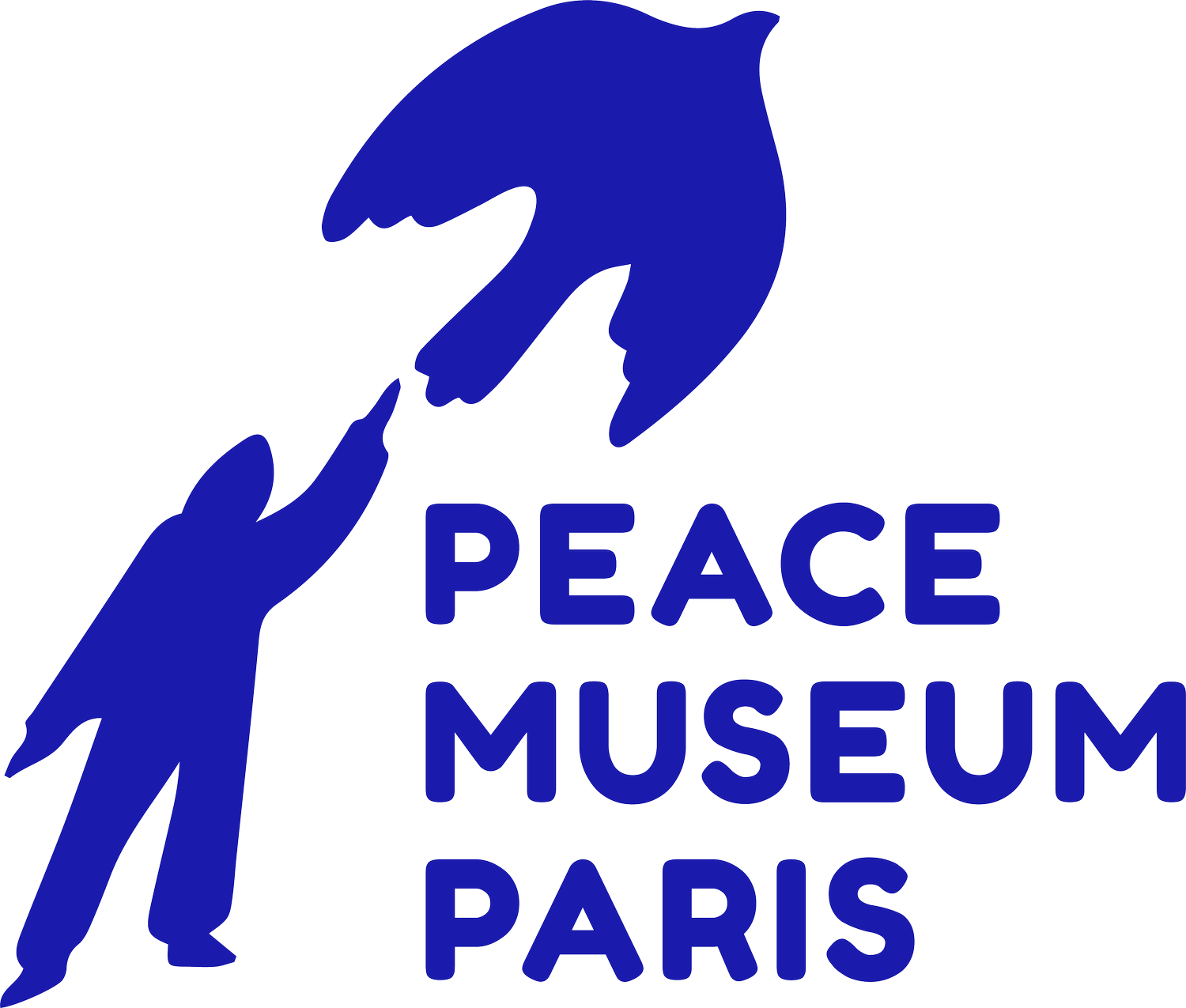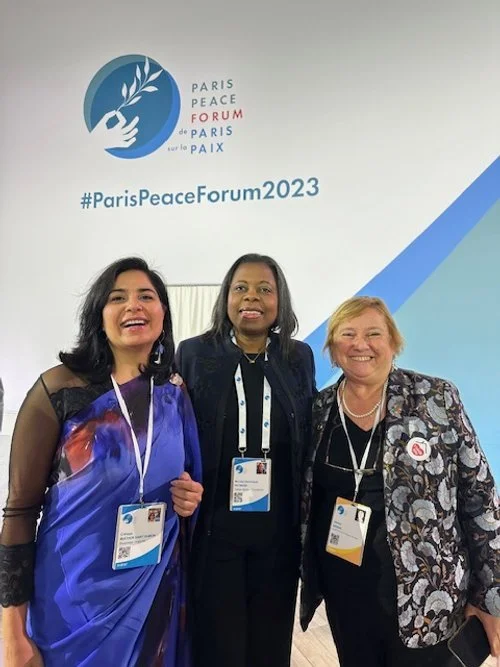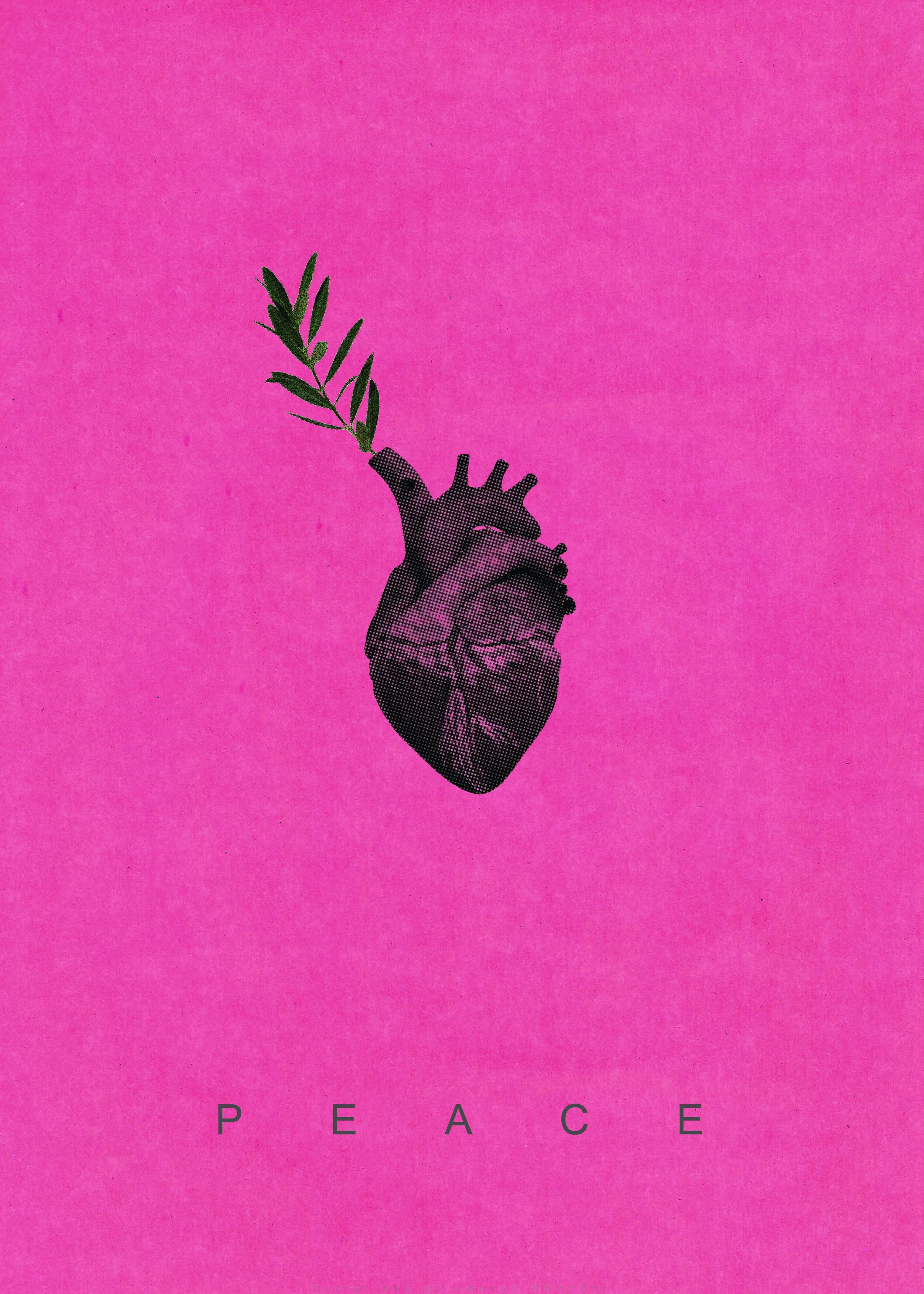Chhaya MATHUR SAINT RAMON
Peace Builder • Leadership Coach • First Managing Director, Peace Hero Museum (Paris)
Chhaya has dedicated her career to building bridges across people, cultures, and ideas. She became the first Managing Director of the Peace Hero Museum in Paris, helping to launch it in 2019 during the turbulent period of the gilets jaunes protests and the onset of the global pandemic. That same year, she also inaugurated the Romanian Peace Hero Museum alongside the late Magda, extending the museum’s mission of celebrating everyday heroes of peace across Europe. For the past seven years, she has served on the Board and behind the scenes of the international Peace Hero Museum, championing the concept of positive peace — a peace rooted not in the absence of conflict, but in the presence of justice, dialogue, and inclusion. As an international leadership coach and consultant, Chhaya MATHUR has worked with leaders from the World Food Programme in over 50 countries and advised major global corporations including Rio Tinto Alcan, Statoil, GSK, UCB, and Novartis among various others. Her work focuses on creating innovative, human-centred approaches to inclusion in fast-changing environments, ensuring that both people and diverse ideas are not left behind but nurtured to thrive. Driven by a belief that peace begins with conversation, Chhaya continues to design spaces — from boardrooms to classrooms — where dialogue, empathy, and shared purpose can flourish.
What does peace mean to you personally?
How do you define or experience peace in your everyday life?
For me, peace is a space where people can have deeper discussions and debate differing perspectives without fear of repercussions.
Personally, it also means providing a safe space for my family to share their deepest worries.
If you could draw or photograph peace, how would it look?
What colors, shapes, or moments would represent peace for you?
It would look like a round table with people from different walks of life and different perspectives, laughing together—joyful.
The colors would be those of warm autumn and light spring: colors of hope and joy.
What is your personal peace process?
How have you worked to create or rebuild peace within your community or surroundings?
Personally, I always aim to create reasonable responses, even to the most conflictual issues. That doesn’t mean avoiding conflict, but rather creating a dialogue where different perspectives can be heard in a thoughtful way.
Again, people don’t have to walk away agreeing with each other—but they should come away feeling heard and seen.
Has it always been achievable or easy? Of course not. But my endeavour has never been to compromise for the sake of peace—it’s to find a real win for both sides.
What advice would you share with others who want to contribute to peace?
What has worked for you, and what simple actions can anyone take to make the world more peaceful?
Sit. Listen. Calm your inner dialogue so you can truly hear the other’s pain.
Don’t rush to understand—listen to question your own assumptions.
Learn to meditate, so that you can be fully present.
Peace on the outside always starts with peace on the inside.
Where do you feel closest to peace?
Is there a space, place, or situation that helps you reconnect with calm, understanding, or harmony?
In my front room, surrounded by my plants and books.
I garden when I can’t figure things out. I cook when things feel out of control. I read when I’m lost.
And always—I’m able to find my peace in the arms of my children. Their presence fills me with the deepest joy and reminds me that, no matter what happens outside, their love is my constant center.
make peace
~
make peace ~
Create art for Peace!
Ameneh Moayedi is a peacebuilder and artist who uses art as a tool for healing, understanding, and unity in divided communities. In this interview with Anna Rabko and George Thornton, she shares her journey, her vision for peace through creativity, and the challenges of fostering connection in a divided world.
Tell us about yourself. Could you share your background and how you got involved in peace-building or promoting peace?
I am Aménéh Moayedi. I am a graphic artist and painter. I am Iranian and live in Paris. Posters and image art are my only means of creating peace and I use this method to fight. I present my work in international exhibitions, biennials, workshops, etc.
What does peace mean to you personally? Can you describe a moment in your life where you truly felt at peace or witnessed peace in action?
Peace! Even writing and designing the typography of this word gives me peace. I always search for peace in silence and Zen and the evolution of humanity. But, if we don't look at it personally, peace is the same as tolerance with others and understanding each other.
What specific actions or initiatives do you take to promote peace? How do you handle situations where promoting peace is met with resistance or conflict?
I continue to repeat this word and its beautiful designs, for example, I send my letters with a peace stamp, or I place the bird of peace on my clothes everywhere. Sometimes small gestures can penetrate people’s hearts the most.
And bigger things like working with you and the Peace Museum.
Do you think we can make the idea of peace more popular or appealing, especially among younger generations? How?
Of course it can! My opinion is that we should work on educating future generations from childhood, and I have many artistic ideas in this regard.
What steps can individuals, communities, and governments take to protect peace in a sustainable way?
It starts by the family learning to talk to each other, to understand each other better, to be tolerant. Governments and media play an important role in the minds of people and schools! Perhaps the enthusiasm and encouragement to know cultures will keep us away from this fear, because cowards love war…!
Who or what inspires you to continue your work as a Peace Maker?
Eight years of my childhood was spent in war, and that is enough for me to be able to speak more about peace through my art and career, and how war reveals the ugly face of humanity.
What is your vision for a peaceful world?
We should take children more seriously and introduce them to art, philosophy, and history. The wrong education can have a huge impact on children's future.
If you could give one piece of advice to someone who wants to promote peace, what would it be?
Organize live programs where children and artists are directly involved, with the goal of peace. Peace is not just a word, it is a philosophy and an important ideology.
create for peace!
create for peace!
Vethan Sautour is a peacebuilder and multidisciplinary artist who uses art to promote peace. In this interview with Anna Rabko and George Thornton, she shares her way to peace building, ideas how to connect and grow in this peace building community.
Tell us about yourself. Could you share your background and how you got involved in peace-building or promoting peace?
I started being involved in the promotion of peace, when I started working for the United Nations Industrial Development Organisation (UNIDO) upon completion of my Master’s Degree. Despite the fact that the purpose of the branch I was working in was agribusiness, I was tasked by my superior to create UNIDO’s first brochure on peace-building. I was already acutely aware of the damages of war through family and friends, who had known war, but I had never partaken in the process of promoting peace before I was given this opportunity. Thereafter, the idea of creating artworks with political themes and trying to make a positive change came naturally.
What does peace mean to you personally? Can you describe a moment in your life where you truly felt at peace or witnessed peace in action?
To me, peace means the absence of war and/or suffering. I very often realise how lucky I am to live in a country at peace and what an unfathomable change it would be to have that luxury taken away from us. When you see how quickly governments are overturned, minorities’ and women’s rights are lost, and countries decide to attack one another, you realise that peace and war start at the scale of individuals with acts of mere hatred. Through my educational background and travelling for work, I have spent most of my life with people from different nationalities, and I can say that peace is when people standing for different ideologies or coming from opposed countries, manage to find common grounds. I have witnessed that many times.
What specific actions or initiatives do you take to promote peace? How do you handle situations where promoting peace is met with resistance or conflict?
My main focuses in the domain of peace are animals, the environment and social topics. Not all of these are obvious, but each of these themes bear a considerable weight in terms of peace and stability. As long as we allow ourselves to treat animals in the way we do, we are at the risk of treating each other similarly. Historically, governments and groups have used dehumanising propaganda and the likening of population categories to animals to justify oppression and murder, and psychology studies show that human abuse can often follow animal abuse. In terms of the environment, according to academics, climate change will lead to the growth of income disparities, racism, misogyny and lack of access to basic resources, among other issues, which would likely spur civil wars. In terms of social issues, I would like to mention my series of works ‘Norms’, which aims at bringing forward news headlines related purely to social themes and made to raise awareness. Similarly, I am working on a new series blending sculpture, photography and painting, using very different artistic movements and aesthetics, and discussing human nature. Last but not least, I work for various NGOs specialised in animals and the environment. When confronted to a situation of conflict in terms of peace promotion, I try to understand the person’s perspective, to express my point of view basing myself on logic and morals, and to keep emotions out of the equation for both parties and remain rational.
Do you think we can make the idea of peace more popular or appealing, especially among younger generations? How?
I think spreading knowledge would go a long way, so as for people to understand why conflicts occur and for which geopolitical reasons governments decide to strike. The lack of trustworthy information is definitely a sizeable issue, and so is propaganda on social media reducing events to taking sides, which algorithms fuel by always recommending the same kind of content. The issue with this is also, that people heavily rely on the news media and social media to understand situations instead of turning to books and academics, which are more thorough and less sensational. Nevertheless, I think that in the Western world the idea of peace is prevalent and that people, the younger generations included, want worldwide security.
What steps can individuals, communities and governments take to protect peace in a sustainable way?
In my opinion, to protect peace in a sustainable way, countries should all start collaborating, ideology and religion should belong to the private life, and there should be no effort made of convincing others with force. I think that past issues shouldn’t be forgotten, they should be recognised in good faith, but there shouldn’t be revenge attempts made years and years afterwards to avoid a fuelling a never-ending circle of hate. Shaking hands with a neighbour, who is a former enemy, is difficult, but France and Germany have managed to do so among others, as well as populations in Rwanda after the big massacre. And when some people go astray and start promoting violence, others should not follow. Even though it is extremely difficult and it seems that war is an inherent component of human nature, I think countries need to change their way of working with one another, especially in the face of climate change, resource scarcity and future pandemics. It would benefit everyone.
Who or what inspires you to continue your work as a peace maker?
Visual artists like Leonardo Da Vinci and Ai Weiwei are definite sources of inspiration, when it comes to my artistic process. Da Vinci is not often advertised as such, however after witnessing war massacres, he tried to ensure his engineering machines were never to be used again for violence. More generally speaking, the plethora of both generous and courageous acts carried out by individuals around the world to help in the domains of human and animal suffering, as well as the environment, are a continuous source of hope and will to be part of this positive, peaceful change.
What is your vision for a peaceful world?
My vision for a peaceful world is one in which all countries would be collaborating. Since we don’t need to make war to one another to survive, nor do we need to hurt animals or keep exploiting the planet to survive, it is fully possible for us to set the past, our enmities and fears aside, and to reverse the tide and keep evolving towards a civilised, rational society.
If you could give one piece of advice to someone who wants to promote peace, what would it be?
I think that giving time to NGOs is always a good idea, as well as making art conveying peace messages, and avoiding caving to mass effects of hatred building on a personal level. When you see what is happening right now with growing waves of racism worldwide, targeting civilians, this is surely not the way to put an end to suffering or break the cycle of hatred. Promoting peace in my opinion comes with tolerance and refusing to resort to violence. Peace starts at the individual level by refusing to play the game of populism, emotional manipulation and misinformation that is sometimes carried out by governments and the media for their own agenda.









